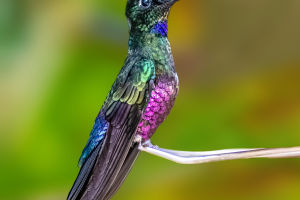A proficient birdwatcher not only identifies local bird species by their physical features but also by their calls.
The Audubon Society refers to this as "playing birds by ear."
Through repeated practice and good field guidance, bird enthusiasts learn to recognize the distinctive calls emitted by various birds, such as chirps, and squawks.
Mastering this skill requires an understanding of why these feathered friends communicate with each other and how they do so. Typically, a bird will use calls unique to its species. For instance, pigeons communicate with gentle cooing among themselves, which may turn into harsher coos when they feel distressed. To thrive and reproduce independently, a pigeon must understand both types of calls.
But what do the sounds of pigeons mean to crows or robins? Can birds understand the calls of other species?
Robert Magrath, an ornithologist and behavioral ecologist at the Australian National University, has explored this question extensively. Magrath and others have conducted numerous studies on interspecies communication among birds, focusing largely on alarm calls birds emit when they detect predators.
As Magrath puts it, "Every local bird species we've studied responds to alarm calls of other species, and we suspect this behavior is widespread globally. This shouldn't be surprising, as nearly all species are threatened by predators, so they should use any available cues to detect carnivores around them."
So, is the understanding of other species' alarm calls innate in birds, or is it learned?
Magrath suggests that in at least some cases, certain birds actively learn to recognize those danger alarms. For instance, the delicate and elegant fairy-wrens are commonly found across the Australian National University campus in Canberra.
Meanwhile, the campus also hosts visits from noisy miners, also known as "bully birds." According to Magrath, there is a botanical garden across the street where fairy wrens often roam, while the noisy miners tend to avoid it.
His research indicates that fairy wrens living on campus fled when they played recordings of alarm calls from noisy miners. In contrast, those inhabiting the botanical garden (where noisy miners were absent) showed no response to the same recordings. This strongly suggests that interspecies call recognition is not innate but must be learned.
Magrath points out, "We even trained fairy-wrens to recognize strange sounds as alarm calls using models of gliding falcons, clearly demonstrating that this ability in birds is learned."
Danger alarms aren't the only calls that can transcend species, and birds will often understand the sounds of other birds if they benefit them. Magrath states, "Some species resist incursions into their territory from other species and respond to their calls asserting territorial sovereignty. Others understand the daily dialogues of other bird species, aiding in forming mixed-species flocks and finding food."
In conclusion, the ability of birds to understand calls across species boundaries is a fascinating aspect of avian communication, underscoring the complexity and adaptability of these creatures in their natural environments.


